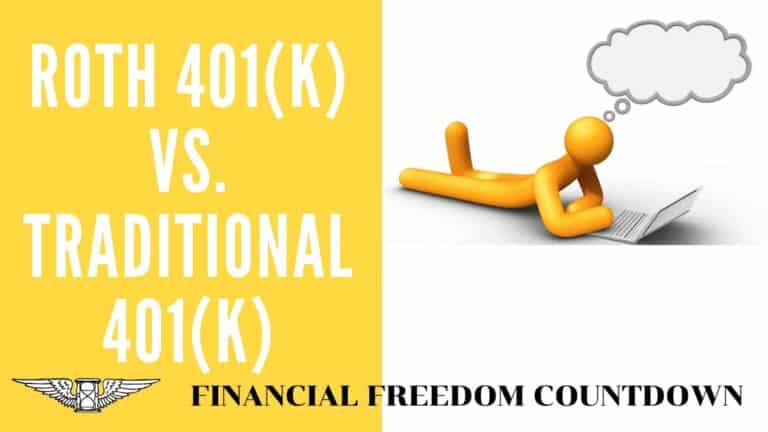Increasing 401(k) Hardship Withdrawals Cast a Shadow on Middle-Class Financial Stability

Recent reports from prominent financial institutions like Fidelity Investments, Bank of America, and Vanguard reveal a concerning trend: an uptick in the share of retirement plan participants resorting to hardship withdrawals from their 401(k) accounts. More individuals face immediate and significant financial strains, leading them to tap into their retirement savings as a solution. This rising trend signals a worrisome pattern, shedding light on the challenges many Americans are encountering.
Decoding Reasons Behind 401(k) Hardship Withdrawal Surge
Stock market investments have done well in 2023 after a dismal performance in 2022. The S&P 500 has risen over 20% year-to-date and is close to the previous all-time high.
However, recent reports by Bank of America indicate that many Americans are prematurely tapping into their retirement savings. The number of participants taking hardship distributions increased 36% year-over-year. The Vanguard 2023 report shows hardship withdrawals, a likely indicator of financial stress, were rising. The Fidelity report shows that in the third quarter of 2023, 2.3% of workers took a hardship withdrawal, up from 1.8% in 2022. The top two reasons behind this uptick were avoiding foreclosure/eviction and medical expenses.
Various pressing circumstances prompt individuals to consider these withdrawals, from unforeseen medical expenses to sudden job loss. Decreased personal savings, the rising cost of essentials due to inflation, and high credit card debt indicate ongoing challenges in the financial landscape.
Opt for Hardship Withdrawals Only as a Final Choice
Many financial advisors discourage tapping into 401(k) investments as it involves additional taxes and penalties. You also lose out on the potential growth from compound interest.
Riley Adams, CPA and founder of WealthUp, says, “A 401(k) hardship withdrawal is a tough decision, not one that should be made lightly. Considering the future lost returns and the immediate tax implications you’ll likely face from withdrawing your money, it behooves you to consider other options before pushing ahead. Regarding the hit you can expect to take from a tax perspective, you’ll need to pay income taxes on any previously untaxed earnings you’ve placed into the account and an additional 10% penalty unless you’re 59.5 or older. Further, you’re not eligible to contribute to your 401(k) again for six months after you receive the distribution.”
As per the IRS, hardship withdrawals allow workers to tap their 401(k) for an “immediate and heavy financial need, and limited to the amount necessary to satisfy that financial need.” However, the penalty can be waived if workers provide adequate evidence that the money is being used for a qualified hardship, such as an unreimbursed medical expense totaling more than 10% of the individual’s adjusted gross income.
Considering the restrictions on contributing for the next six months, opting for a 401(k) loan might be more advantageous in certain situations. Under federal regulations, employees can borrow up to 50% of their account balance or a maximum of $50,000, whichever is lower, without facing penalties, provided the loan is repaid within five years.
An advantage of opting for a 401(k) loan over a hardship withdrawal is that when you borrow from a 401(k), you pay back the loan with interest, and that extra interest goes back into your own account. This helps compensate for the lost investment gains when you borrowed the money from your retirement account. 401(k) loans do not report to the credit bureaus and do not impact credit scores. The challenge of a 401(k) loan is that in the event of a job loss or securing new employment, many employers may demand prompt repayment of the remaining balance within a shorter period. Also, repaying the loan using after-tax dollars means you will get double-taxed when eventually receiving retirement age-appropriate distributions.
Currently, very few options exist to tide over emergencies. Selling vested restricted stock units (RSUs) or shares from employee stock purchase plans and liquidating brokerage assets are alternative methods to acquire immediate funds when an emergency fund isn’t available. Accessing a home equity line of credit (HELOC) or cash-out refinancing is risky if you cannot repay the money.
Congress included the SECURE Act 2.0 provisions to provide easier access to emergency savings within retirement accounts. Beginning in 2024, individuals under 59.5 can withdraw up to $1,000 from their retirement account for emergency expenses without the customary 10% tax penalty on early withdrawals. Nonetheless, penalties may apply if you do not replenish these funds within three years and require another withdrawal due to a similar circumstance.
Companies may allow their employees to set up emergency savings accounts through automatic payroll deductions, with an upper limit of $2,500 per annum and the first four withdrawals in a year free from taxes and penalties.
A Tale of Two Americas
Despite the challenges presented by increased hardship withdrawals, reports indicate that certain 401(k) balances have risen compared to the previous year, signaling resilience in some retirement accounts. The Bank of America report suggests that average 401(k) balances will be up nearly 10% in 2023. The stock market’s strong performance has undoubtedly helped Americans who managed to continue contributing to their retirement accounts.
However, the high average 401(k) balances present a misleadingly optimistic outlook, while the starkly contrasting lower median values underscore the divided financial landscape in America.
The Vanguard study showed that in 2022, the average account balance for Vanguard participants was $112,572, and the median balance was only $27,376. The U.S. Census Bureau paints a similarly bleak picture of median IRA and 401(k) account balances at $30,000.
The high inflation rate and wages not keeping pace with the rise in prices of goods and services have forced cash-strapped Americans to dip into their retirement savings to make ends meet. The low unemployment rate provides hope, indicating that not all is lost for Americans’ financial futures. There remains an opportunity for individuals to contribute to their retirement savings, mainly if inflation decreases, enabling them to navigate financial hurdles and continue securing their long-term economic well-being.

John Dealbreuin came from a third world country to the US with only $1,000 not knowing anyone; guided by an immigrant dream. In 12 years, he achieved his retirement number.
He started Financial Freedom Countdown to help everyone think differently about their financial challenges and live their best lives. John resides in the San Francisco Bay Area enjoying nature trails and weight training.
Here are his recommended tools
Personal Capital: This is a free tool John uses to track his net worth on a regular basis and as a retirement planner. It also alerts him wrt hidden fees and has a budget tracker included.
Platforms like Yieldstreet provide investment options in art, legal, real estate, structured notes, venture capital, etc. They also have fixed-income portfolios spread across multiple asset classes with a single investment with low minimums of $10,000.





